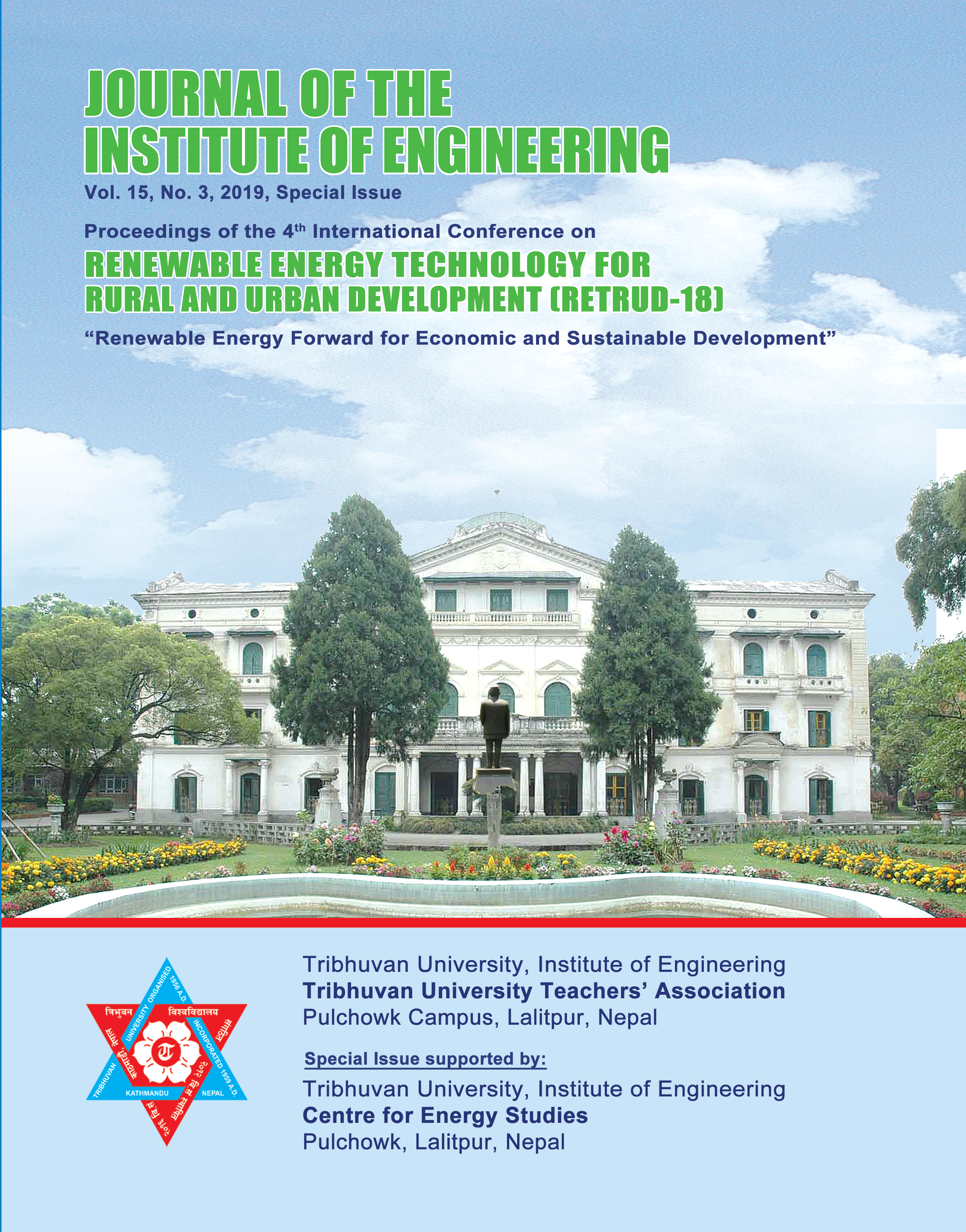Thermo-Structural Analysis of High-Pressure Turbine Blade
DOI:
https://doi.org/10.3126/jie.v15i3.32018Keywords:
Clearance, Energy Loss, Elongation, Centrifugal Stress, Thermal StressAbstract
Turbine blade tip clearance plays major role in smooth running of axial turbines. The turbine blade clearance contributes 20-40% of total loss in gas turbine. In Rolls Royce MT2 Turbine with 2% tip to span clearance ratio, tip clearance accounts for 40% of total losses. Turbine blade clearance is necessary as the turbine blade operates at very high temperature up to 1700 ºC and very high centrifugal load. Small turbine tip clearance may forbid expansion of turbine blade which will result in turbine tip rubbing with the casing.
High pressure turbine blade experiences high thermal and centrifugal stress. The objective of this paper is to study the individual and combined effect of these stress. The material used for analysis is cast based nickel alloy IN-738. The melting range of this alloy is 1230-1315 ºC with thermal expansion coefficient of 15.39E-6 per ºC. The turbine blade geometry with height 120 mm is used for analysis. The Mathematical modelling of above geometry shows that the centrifugal force with rotation velocity 100 rad/s produces 0.00252424 mm elongation and combined thermal-centrifugal loading produces 1.46520576 mm elongation.
The results form ANSYS is used for verification and the elongation due to centrifugal stress is 0.0014885 mm and combined stress produces elongation of 1.2608 mm. The total elongation from analytical method and ANSYS are similar. It shows that the effect due to centrifugal force on turbine blade is less compared to thermal effect. For operating condition of 816 ºC temperature and 100 rad/s rotational velocity, the overall stress contributes around 1.22 % elongation of turbine blade span.
Downloads
Downloads
Published
How to Cite
Issue
Section
License
The Copyright is held by Journal of the Institute of Engineering, IOE, TU




